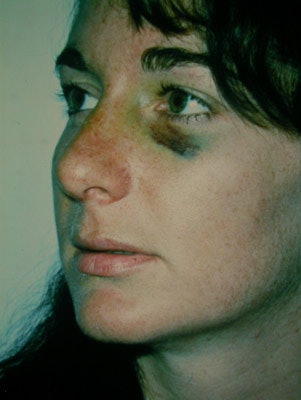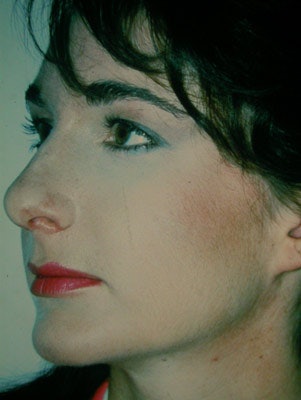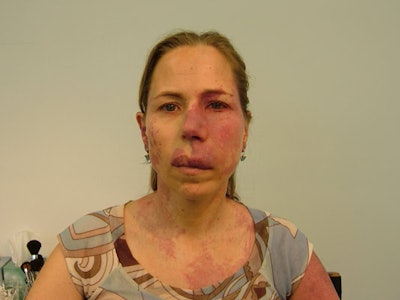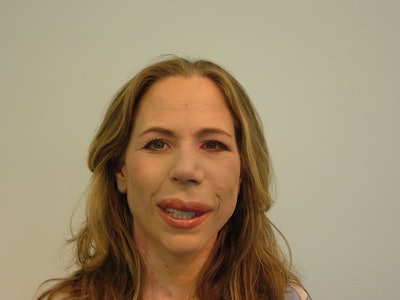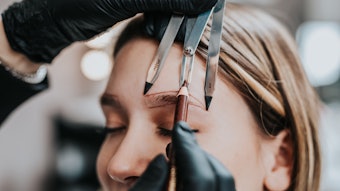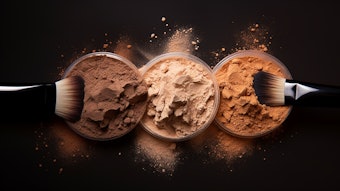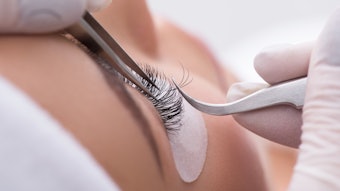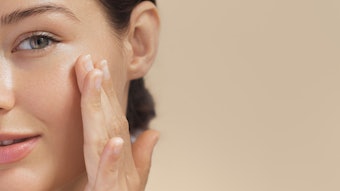
According to the Merriam-Webster Online Dictionary, the word “metamorphosis” means a striking alteration in appearance, character or circumstances. Metamorphic makeup therapy may aptly be described as unique to skin and emotional rehabilitation. It is also known as cosmetic makeup therapy, which involves the application of specialized camouflage makeup to cover and minimize imperfections while enhancing natural beauty, correcting facial deformities or reducing the effects of skin trauma brought on by congenital, accidental, dermatological or surgical challenges.
Looking normal
A person’s beauty and strength of character are often showcased through the face and hair, and the degree to which these features are properly accentuated or emphasized can significantly influence one’s level of peer and societal acceptance. Facial features affect a person’s self-image, which is the really important issue.
Looking normal can be the greatest—and sometimes the only—goal in life for many individuals. Facial issues may be suffered due to birth defects, disfiguring scars, abnormally distorted features, skin imperfections, dermatological conditions or postsurgical effects. Even the effects of aging are physical obstacles due to skin discolorations, uneven skin texture and broken capillaries.
In society, it can be a great challenge to overcome these maladies. You may recall the many fairy tales of your childhood that cast the heroine as beautiful and the witch as ugly and evil. These perceptions start early as innocent anecdotes and grow to become visual snapshots that remain forever. The reality is that the reflective self-image determines self-esteem and how a person acts and interacts within society.
Why is corrective makeup essential? Simply put, it provides a cosmetic therapy unique in its psychological ability to help promote self-esteem and well-being, while physically supporting healthier skin by protecting it from environmental assaults, such as pollution, ultraviolet (UV) rays and other harmful elements that accelerate the aging process and can cause skin cancer.
Each year, the number of individuals who undergo cosmetic and reconstructive surgery increases at an incredible rate. The social and economic influence that places emphasis on appearance is quite evident at both ends of the age spectrum. Younger people seek peer acceptance; older people are challenged with maintaining positive attitudes for an extended period of time; and the facially challenged strive for normalcy.
Facial reconstructive and rejuvenating surgery can truly satisfy many needs and often will provide an extra measure of confidence that may otherwise be difficult to achieve. Facial correction requires no apologies and is understandably well-accepted in all circles throughout many regions of the civilized world, but it is not necessarily the answer. There can be many medical considerations to contemplate, and not all individuals are eligible for facial surgical modifications. Surgery also isn’t guaranteed to successfully correct all traumatized skin conditions. Metamorphic makeup therapy takes up where the surgeon’s skills leave off, acting as a prosthetic by minimizing defects and providing an almost flawless skin texture.
The impact
The purpose of any cosmetic use is always to improve a person’s appearance. A patient usually becomes frightened and sometimes disappointed after cosmetic or reconstructive surgery when the swelling and discoloration begin. The assistance of the camouflage makeup is then greatly needed to help the patient overcome feelings of post-op frustration.
The philosophy of cosmetic rehabilitation is simple when it comes to camouflage makeup therapy and goes beyond surgical boundaries. Makeup professionals—making the physical changes with the slight of a hand and the swipe of a brush—are also able to offer psychological support, encouragement, factual information, physical therapy approaches to improving appearance and experience, and emotional support.
Sometimes the idea about what must be done requires great patience from the camouflage artist, who might be instructed to minimize the swelling, bruising and discolorations that effect a client’s self-image. The client’s physiological well-being, in turn, begins to reduce stress and thus elevates the immune system to combat possible complications. It is always important that the camouflage makeup artist not only apply, but also teach the correct use of cosmetics to hide the trauma and enhance the appearance.
It is important not to underestimate the emotional, social, psychological and economic impact of any visible deformity. Most individuals afflicted with post-operative, congenital, dermatological and accidental facial challenges understand surgical and medical limitations and will embrace the potential benefits of camouflage makeup realistically. Under these circumstances, the true objectives can be accomplished and can yield great final results.
Due to the delicate nature of any skin that has been traumatized, powder mineral makeup or regular makeup may not be the most appropriate choice for a distressed skin condition. Camouflage makeup is a high pigment, opaque substance formulated in a concentrated cream or fluid that is waterproof, as well as heat- and muscle-resistant, with the long-lasting ability to withstand many hours of wear on the skin’s traumatized surface. Camouflage makeup should also be able to adhere to slick, nonporous surfaces, such as hypertrophic scars. A significant benefit of using camouflage makeup is also for the physical protection it provides and the sealant ability to protect against a hostile environment. Titanium dioxide, an inorganic substance, is the primary pigment in makeup, providing an effective barrier of sunscreen. The rule of thumb in camouflage SPF sunscreen is the lighter the camouflage color, the more titanium dioxide, the more sunscreen ability against environmental damage for lighter skin.
It does not matter how thick a foundation is to maintain coverage. Thicker makeup may not provide the best concealment; therefore, do not judge the makeup’s ability to disguise a discoloration by a thick viscosity. Rather, look for the concentration of inorganic pigment, such as titanium dioxide, for optimal application.
Proper color selection
Corrective makeup is not new. I have worked with patients at Saint Francis Memorial Hospital’s Bothin Burn Center in San Francisco, and the many challenges I encountered there with various skin trauma conditions led me to understand the importance of selecting a corrective makeup that satisfies all undertones and ethnic values.
All makeup artists are also obliged to recognize the new skin of color because it is the ultimate skin snapshot for the future. The hallmark of the traditional skin color for makeup has been altered throughout the decade. During the past several years, the demographics shifted with respect to the predominate white skin types and are juxtaposed with like-kinds that can appear light, only to have genetic ties to infinite blends of many racial combinations.
The selection of proper color in camouflage is imperative. If you apply too light a color to a dark skin, it will appear ashy; conversely, an incorrect selection affixed to a light skin will look like a mask. Having a wide range of colors provides a more accurate application to address these needs.
A return to normalcy
Skin trauma has many sources: aging, acne, burns, injury, birthmarks, dermatological, post-operative scarring and swelling. Metamorphic makeup therapy is an important and valuable asset needed to reduce the negative effects caused by these conditions. In addition, it has also become an integral remedy for injectable procedures to minimize the bruising that often accompanies several facial fillers.
Whatever the cause, patients with traumatized skin require more than pain management and time to heal; they need to be a part of society without experiencing ridicule. Camouflage makeup therapy is one solution to resolve the appearance of these conditions and assist the individual in moving forward and taking back control of their life. It is empowering. Identity rehabilitation using camouflage therapy is one step towards returning a patient to normalcy ... and what an important step!

